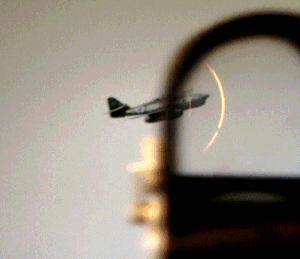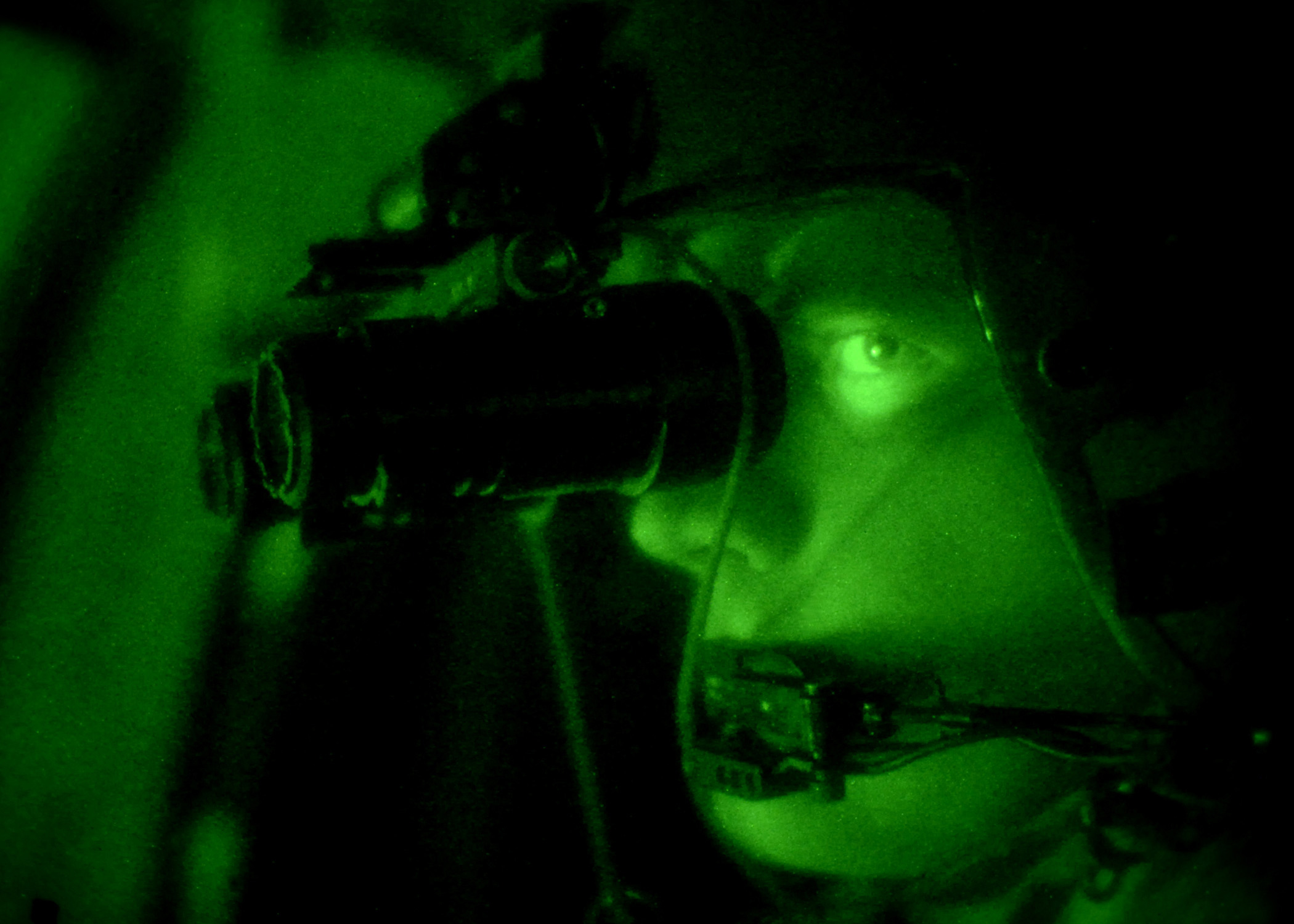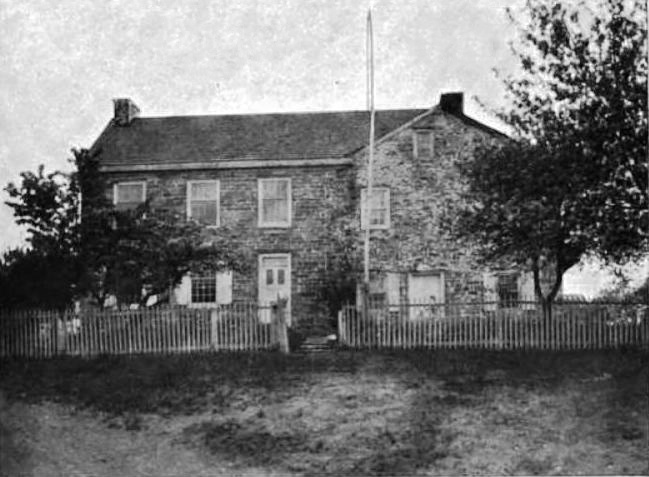|
Riflescope
A telescopic sight, commonly called a scope informally, is an optical sighting device based on a refracting telescope. It is equipped with some form of a referencing pattern – known as a '' reticle'' – mounted in a focally appropriate position in its optical system to provide an accurate point of aim. Telescopic sights are used with all types of systems that require magnification in addition to reliable visual aiming, as opposed to non-magnifying iron sights, reflector (reflex) sights, holographic sights or laser sights, and are most commonly found on long-barrel firearms, particularly rifles, usually via a scope mount. The optical components may be combined with optoelectronics to add night vision or smart device features. History The first experiments directed to give shooters optical aiming aids go back to the early 17th century. For centuries, different optical aiming aids and primitive predecessors of telescopic sights were created that had practical or ... [...More Info...] [...Related Items...] OR: [Wikipedia] [Google] [Baidu] |
Scope Mount
Scope mounts are used to attach telescopic sights or other types of sights to firearms. The scope sight itself is usually made for only one of two main types of mounts, which can be classified as ''scopes for ring mounts'' (for example a 30 mm tube) or ''scopes for rail mounts'' (like for example the Zeiss rail). Words such as ''mounts'' and ''bases'' are used somewhat loosely, and can refer to several different parts which are either used together or in place of each other as ways to mount optical sights to firearms. When it comes to the interface of the firearm itself, the Picatinny rail is one of the most widespread standard for new firearms as of 2020. While most scopes are made for being mounted either with a ''ring mount'' or a ''rail mount'', some sights have an integral mounting mechanism allowing them to be attached directly to the firearm, like for example an integrated Picatinny mount. In addition, there are many proprietary and brand-specific types of mounts that ... [...More Info...] [...Related Items...] OR: [Wikipedia] [Google] [Baidu] |
Reflector Sight
A reflector sight or reflex sight is an optical sight that allows the user to look through a partially reflecting glass element and see an illuminated projection of an aiming point or some other image superimposed on the field of view. These sights work on the simple optical principle that anything at the focus of a lens or curved mirror (such as an illuminated reticle) will appear to be sitting in front of the viewer at infinity. Reflector sights employ some sort of "reflector" to allow the viewer to see the infinity image and the field of view at the same time, either by bouncing the image created by lens off a slanted glass plate, or by using a mostly clear curved glass reflector that images the reticle while the viewer looks through the reflector. Since the reticle is at infinity it stays in alignment with the device to which the sight is attached regardless of the viewer's eye position, removing most of the parallax and other sighting errors found in simple sighting devices. ... [...More Info...] [...Related Items...] OR: [Wikipedia] [Google] [Baidu] |
Night Vision Device
A night-vision device (NVD), also known as a night optical/observation device (NOD), night-vision goggle (NVG), is an optoelectronic device that allows visualization of images in low levels of light, improving the user's night vision. The device enhances ambient visible light and converts near-infrared light into visible light which can be seen by the user; this is known as I2 ( image intensification). By comparison, viewing of infrared thermal radiation is referred to as thermal imaging and operates in a different section of the infrared spectrum. A night vision device usually consists of an image intensifier tube, a protective housing, and may have some type of mounting system. Many NVDs also include a protective sacrificial lens, mounted over the front lens (ie. objective lens) on NVDs to protect the latter from damage by environmental hazards and some can incorporate [...More Info...] [...Related Items...] OR: [Wikipedia] [Google] [Baidu] |
Optoelectronics
Optoelectronics (or optronics) is the study and application of electronic devices and systems that find, detect and control light, usually considered a sub-field of photonics. In this context, ''light'' often includes invisible forms of radiation such as gamma rays, X-rays, ultraviolet and infrared, in addition to visible light. Optoelectronic devices are electrical-to-optical or optical-to-electrical transducers, or instruments that use such devices in their operation. ''Electro-optics'' is often erroneously used as a synonym, but is a wider branch of physics that concerns all interactions between light and electric fields, whether or not they form part of an electronic device. Optoelectronics is based on the quantum mechanical effects of light on electronic materials, especially semiconductors, sometimes in the presence of electric fields. * Photoelectric or photovoltaic effect, used in: ** photodiodes (including solar cells) ** phototransistors ** photomultiplier ... [...More Info...] [...Related Items...] OR: [Wikipedia] [Google] [Baidu] |
James Lind (naturalist)
James Lind FRS FRSE FRCPE (1736–1812) was a Scottish natural philosopher and physician. Life James Lind was born in Gorgie, Edinburgh on 17 May 1736. He studied medicine at Edinburgh University under William Cullen and Joseph Black, and graduated in 1768. In 1766, he then joined the East India Company as surgeon. In 1768 he received his doctorate (MD) from Edinburgh upon completing a dissertation on marsh fever (malaria) in Bengal. On 6 November 1770 he was admitted a Fellow of the College of Physicians, Edinburgh. Lind was also a corresponding member of the Lunar Society. Personality Lind is widely regarded as having an eccentric personality, and considered to be reckless with spending money as captured by the following dialogue: "Why, Dr. Lind, you spend a whole seas of gold", to which Lind replied, "Madam, 'tis true, my very name, behold, Begins with pounds and ends, alas, with pence" Charles Burney described Lind as extremely thin, tall, with grey hair as seen ar ... [...More Info...] [...Related Items...] OR: [Wikipedia] [Google] [Baidu] |
Recoil
Recoil (often called knockback, kickback or simply kick) is the rearward thrust generated when a gun is being discharged. In technical terms, the recoil is a result of conservation of momentum, as according to Newton's third law the force required to accelerate something will evoke an equal but opposite reactional force, which means the forward momentum gained by the projectile and exhaust gases ( ejectae) will be mathematically balanced out by an equal and opposite momentum exerted back upon the gun. In hand-held small arms, the recoil momentum will be eventually transferred to the ground, but will do so through the body of the shooter hence resulting in a noticeable impulse commonly referred to as a "kick". In heavier mounted guns, such as heavy machine guns or artillery pieces, recoil momentum is transferred to the Earth's surface through the platform on which the weapon is mounted. In order to bring the rearward moving gun to a halt, the momentum acquired by t ... [...More Info...] [...Related Items...] OR: [Wikipedia] [Google] [Baidu] |
Eyepiece
An eyepiece, or ocular lens, is a type of lens that is attached to a variety of optical devices such as telescopes and microscopes. It is named because it is usually the lens that is closest to the eye when someone looks through the device. The objective lens or mirror collects light and brings it to focus creating an image. The eyepiece is placed near the focal point of the objective to magnify this image. The amount of magnification depends on the focal length of the eyepiece. An eyepiece consists of several "lens elements" in a housing, with a "barrel" on one end. The barrel is shaped to fit in a special opening of the instrument to which it is attached. The image can be focused by moving the eyepiece nearer and further from the objective. Most instruments have a focusing mechanism to allow movement of the shaft in which the eyepiece is mounted, without needing to manipulate the eyepiece directly. The eyepieces of binoculars are usually permanently mounted in the binocular ... [...More Info...] [...Related Items...] OR: [Wikipedia] [Google] [Baidu] |
David Rittenhouse
David Rittenhouse (April 8, 1732 – June 26, 1796) was an American astronomer, inventor, clockmaker, mathematician, surveyor, scientific instrument craftsman, and public official. Rittenhouse was a member of the American Philosophical Society and the first director of the United States Mint. Biography David Rittenhouse was born on April 8, 1732, in Roxborough Township, Philadelphia County, near a small village within Philadelphia called Rittenhousetown. This village is located near Germantown, along the stream Paper Mill Run, which is a tiny tributary of the Wissahickon Creek. When his uncle, William Rittenhouse, died, David inherited his uncle's carpentry tools and instructional books. At a young age, David showed a high level of intelligence by creating a working scale model of his great-grandfather William Rittenhouse's paper mill. He built other scale models in his youth, like a working waterwheel. David never attended elementary school—he was self-taught from his ... [...More Info...] [...Related Items...] OR: [Wikipedia] [Google] [Baidu] |
Charles Willson Peale
Charles Willson Peale (April 15, 1741 – February 22, 1827) was an American painter, soldier, scientist, inventor, politician and naturalist. He is best remembered for his portrait paintings of leading figures of the American Revolution, and for establishing one of the first museums in the United States. Early life Peale was born in 1741 between modern-day Queenstown and Centreville, Queen Anne's County, Maryland, the son of Charles Peale (1709–1750) and his wife Margaret Triggs (1709–1791). He had a younger brother, James Peale (1749–1831). He was the brother-in-law of Nathaniel Ramsey, a delegate to the Congress of the Confederation. Four years after his father’s death in 1750, Charles became an apprentice to a saddle maker by the name of Nathan Waters when he was thirteen years old. Upon reaching maturity, he opened his own saddle shop and joined the Sons of Liberty in 1764 in opposition to the “court” party of Maryland. However, he was unsuccessful in ... [...More Info...] [...Related Items...] OR: [Wikipedia] [Google] [Baidu] |
Spider Web
A spider web, spiderweb, spider's web, or cobweb (from the archaic word '' coppe'', meaning "spider") is a structure created by a spider out of proteinaceous spider silk extruded from its spinnerets, generally meant to catch its prey. Spider webs have existed for at least 100 million years, as witnessed in a rare find of Early Cretaceous amber from Sussex, in southern England. Many spiders build webs specifically to trap and catch insects to eat. However, not all spiders catch their prey in webs, and some do not build webs at all. "Spider web" is typically used to refer to a web that is apparently still in use (i.e. clean), whereas "cobweb" refers to abandoned (i.e. dusty) webs. However, the word "cobweb" is also used by biologists to describe the tangled three-dimensional web of some spiders of the family Theridiidae. While this large family is known as the cobweb spiders, they actually have a huge range of web architectures; other names for this spider family include ta ... [...More Info...] [...Related Items...] OR: [Wikipedia] [Google] [Baidu] |
Keplerian Telescope
A refracting telescope (also called a refractor) is a type of optical telescope that uses a lens as its objective to form an image (also referred to a dioptric telescope). The refracting telescope design was originally used in spyglasses and astronomical telescopes but is also used for long-focus camera lenses. Although large refracting telescopes were very popular in the second half of the 19th century, for most research purposes, the refracting telescope has been superseded by the reflecting telescope, which allows larger apertures. A refractor's magnification is calculated by dividing the focal length of the objective lens by that of the eyepiece. Refracting telescopes typically have a lens at the front, then a long tube, then an eyepiece or instrumentation at the rear, where the telescope view comes to focus. Originally, telescopes had an objective of one element, but a century later, two and even three element lenses were made. Refracting telescope is a technology that ... [...More Info...] [...Related Items...] OR: [Wikipedia] [Google] [Baidu] |
William Gascoigne (scientist)
William Gascoigne (1612 – 2 July 1644) was an English astronomer, mathematician and maker of scientific instruments from Middleton, Leeds who invented the micrometer and the telescopic sight. He was one of a group of astronomers in the north of England who followed the astronomy of Johannes Kepler, which included Jeremiah Horrocks and William Crabtree. Life and work Gascoigne was born in Middleton, Leeds in 1612, the son of a minor country gentleman. His father was Henry Gascoigne, Esq., of Thorpe-on-the-Hill in the parish of Rothwell, near Leeds, Yorkshire. His mother was Margaret Jane, daughter of William Cartwright. Little is known of his early life. He claimed he was educated at the University of Oxford, although no record of this has been found. [...More Info...] [...Related Items...] OR: [Wikipedia] [Google] [Baidu] |




.jpg)




